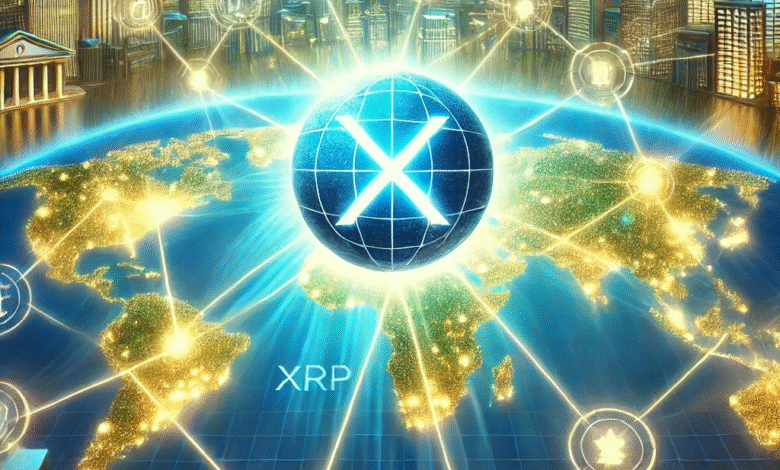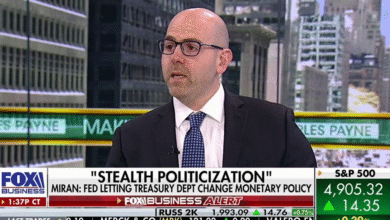XRP Adoption: Surge in Corporate Treasury Demand Unveiled

XRP adoption is rapidly gaining momentum as major corporations embrace it as a viable asset in their treasury strategies, underlining a notable shift in institutional demand. This surge in corporate interest can be attributed to recent regulatory clarifications that have positioned XRP favorably within the crypto landscape. As companies reconsider their financial frameworks, the Ripple payment network offers a robust solution, blending utility with potential for profit generation. Notably, XRP’s price surge of over 480% in the past year has further galvanized institutional involvement, with firms announcing substantial commitments of nearly $980 million for acquisitions. Such corporate treasury movements reflect an evolving crypto treasury strategy, signaling a broader acceptance of digital assets and shaping the future of finance in notable ways.
The integration of XRP into corporate finances signifies a transformative trend in how businesses view digital currencies. As institutional players explore this innovative asset, the term “cryptocurrency treasury management” has gained traction. Companies are increasingly transitioning from traditional financial instruments to embracing altcoins, particularly XRP, which leverages the capabilities of the Ripple payment system. This pivot from mainstream cryptocurrencies highlights the desire for assets that not only provide liquidity but also align with modern financial strategies. As the landscape evolves, the potential applications and corporate adoption of XRP will continue to redefine treasury strategies for the future.
The Rising Trend of XRP Adoption in Corporate Treasuries
In recent months, XRP has increasingly captured the attention of corporate treasuries as the token proves its potential beyond speculative investments. With major companies strategically incorporating XRP into their asset allocations, there is a noticeable shift in the finance sector. This trend is largely influenced by the surge in institutional demand, coupled with regulatory clarity surrounding XRP, particularly following favorable court rulings. Companies like Nature’s Miracle Holdings and Vivopower International have made bold commitments to integrate XRP into their financial strategies, marking a pivotal moment in corporate cryptocurrency engagement.
The widespread acceptance of XRP in corporate treasuries signals a broader movement towards a diverse range of crypto assets. As organizations transition from traditional fiat holdings to digital currencies, XRP’s unique characteristics such as liquidity and its seamless integration with the Ripple payment network are proving to be appealing. This shift could signify a fundamental change in how corporate treasury operations are managed, as businesses increasingly adopt a multi-asset crypto treasury strategy that allows for more dynamic liquidity management.
Institutional Demand Drives XRP Price Surge
The recent uptick in institutional interest has directly impacted XRP’s price trajectory, showcasing the connection between corporate investments and market performance. Over the past year, XRP’s value has surged by over 480%, largely attributed to the influx of institutional capital looking for viable investment alternatives. Ripple’s favorable legal status as clarified by the SEC ruling has catalyzed this interest, enabling confidence among corporate treasuries to explore XRP as a viable asset. As institutional players continue to enter the market, the price dynamics of XRP are expected to remain robust, influencing broader market fiscal strategies.
The positive market sentiment fueled by institutional adoption paints an optimistic outlook for XRP’s future. As companies invest significant portions of their treasury in XRP, it lays the groundwork for sustained price growth within the cryptocurrency space. The notion that XRP can provide both liquidity and a dependable means of transaction through the Ripple payment network is reshaping investor attitudes towards crypto. With public announcements totaling over $980 million in planned acquisitions, the response from the market indicates a strong belief in the long-term viability of XRP as a stable treasury option.
Navigating Risks in XRP Corporate Treasury Strategies
While XRP’s integration in corporate treasury strategies presents exciting opportunities, organizations must also navigate a landscape fraught with volatility and potential financial risks. Market fluctuations pose significant threats to the stability of crypto holdings; thus, companies must implement robust risk management strategies. Concerns over impairment charges and the need for ongoing capital raises highlight the precarious nature of relying on cryptocurrencies as treasury assets. As public sentiment shifts towards cryptocurrencies, companies that adequately address these risks will likely lead the charge in successful long-term adoption.
Furthermore, the evolving regulatory environment will continue to pose both challenges and opportunities for businesses utilizing XRP in their corporate treasury strategies. As the legal landscape changes, companies will need to stay agile and informed to capitalize on emerging trends while protecting themselves from potential regulatory repercussions. The ability to maintain compliance while executing a successful crypto treasury strategy will be essential for sustainability as the market continues to mature and institutional demand for XRP grows.
Ripple Payment Network: The Backbone of XRP’s Adoption
The Ripple payment network is a pivotal factor aiding the adoption of XRP within corporate treasuries. By facilitating fast, low-cost international transactions, Ripple’s technology addresses some of the most pressing challenges businesses face when dealing with global cash flows. As companies increasingly seek efficient payment solutions that can enhance their treasury strategies, Ripple’s network offers an enticing proposition. XRP’s role as a bridge currency within this network further amplifies its appeal, cementing its position as a preferable asset in corporate treasury portfolios.
Moreover, Ripple’s ongoing enhancements to its payment network ensure that it remains at the forefront of crypto innovation, attracting more institutional participation. The integration of XRP with payment systems allows companies to reduce transaction costs and improve operational efficiency. As the liquidity and speed offered by the Ripple payment network become fundamental for corporate financial structures, XRP is positioned to become a mainstay in crypto treasury strategies globally, signifying not just adoption, but an evolution of corporate finance.
Corporate Finance and the Shift to Crypto Treasuries
The transition from traditional corporate finance models to crypto treasuries signifies a transformative shift in how companies approach asset management. As institutional demand for cryptocurrencies rises, the concept of holding digital assets like XRP is no longer seen as purely speculative. Companies are starting to recognize the potential for enhanced liquidity and yield generation through strategic crypto treasury allocations. This trend indicates an appreciation for the utility of cryptocurrencies beyond mere trading instruments, fostering greater corporate interest in leveraging digital assets for financial management.
By embracing a diversified crypto treasury strategy, organizations aim to capitalize on the growth potential that comes with digital assets like XRP. Traditional finance often entailed slow and cumbersome processes, which cryptocurrencies can mitigate through innovative technologies like blockchain. As more firms adopt this shift, the financial landscape will continue to evolve, creating new opportunities for growth and operational efficiencies. Business leaders must therefore remain attentive to the emerging trends in crypto adoption as they shape the future of corporate treasury operations.
The Future of XRP in Corporate Strategy
As we look to the future, the role of XRP within corporate strategy appears promising, especially in light of the increased institutional adoption. Companies that strategically allocate XRP in their treasury are likely to gain competitive advantages in transaction efficiencies and capital allocation flexibility. With favorable market conditions and a supportive regulatory environment projected, XRP is set to further entrench itself within the systems of corporate finance. This also implies that organizations must be prepared to adapt their strategies in response to market developments around cryptocurrencies.
Additionally, the potential for new financial products, such as exchange-traded funds (ETFs), reinforces the expectation of a continued rise in XRP’s acceptance among institutional investors. As companies navigate the rapidly evolving cryptocurrency landscape, integrating XRP into their corporate strategies can yield substantial advantages. The future will likely see a broader acceptance of XRP, building a framework that supports both regulatory compliance and strategic growth through digital asset integrations.
XRP’s Competitive Edge Over Other Cryptocurrencies
XRP offers distinct advantages over other cryptocurrencies, making it an attractive choice for corporate treasuries. Unlike Bitcoin and Ethereum, which are often viewed primarily as store-of-value assets, XRP is designed for practical applications in cross-border transactions. Ripple’s focus on enhancing transaction speeds and reducing costs establishes XRP as a leading solution for businesses seeking efficient payment mechanisms. This competitive edge is significant as institutional players increasingly prioritize utility in their cryptocurrency investments.
Moreover, the inherent liquidity in XRP is a major benefit for companies looking to incorporate digital assets into their treasury strategies. This liquidity ensures that corporations can execute transactions efficiently, avoiding issues related to slippage that can affect less liquid cryptocurrencies. With institutional demand on the rise, the role of XRP in practical use cases will likely continue to grow, solidifying its status as a staple in corporate crypto treasury strategies.
Navigating Regulatory Landscapes for XRP Adoption
Understanding the regulatory landscape is critical for companies seeking to adopt XRP within their treasury strategies. As Ripple has successfully navigated its legal challenges, other institutions must remain vigilant about compliance to avoid penalties or disruptions. The favorable outcomes of Ripple’s legal battles present a precedent that could influence how other companies approach XRP. Ahead of implementing crypto treasury strategies, organizations should actively engage with ongoing regulatory discussions to ensure adherence to evolving laws and regulations.
Additionally, fostering relationships with regulators can help organizations better understand the implications of adopting XRP and other cryptocurrencies. By being proactive in their compliance efforts, businesses can minimize risks associated with regulatory scrutiny, allowing them to focus on integrating XRP into their treasury strategies effectively. This strategic foresight is essential as the institutional demand for XRP grows, ensuring that companies can weather regulatory changes while capitalizing on the opportunities presented by digital assets.
XRP’s Impact on Global Financial Systems
The adoption of XRP has far-reaching implications for global financial systems, particularly as institutional players begin to integrate digital currencies into their operations. XRP’s ability to facilitate real-time cross-border payments can revolutionize traditional banking processes that are often slow and costly. By utilizing the Ripple payment network, financial institutions can streamline transactions, thus enhancing overall economic efficiency. This trend towards faster, more cost-effective solutions is part of a broader movement towards digitization in finance.
As XRP continues to gain traction, the potential for reshaping global finance becomes more pronounced. Companies may increasingly utilize XRP for their treasury needs, thereby influencing global capital flows and liquidity patterns. With institutional demand driving its adoption, XRP could serve as a critical bridge in the ongoing transformation of financial systems worldwide. The implications of such a shift could lead to new opportunities, partnerships, and frameworks that empower corporations to leverage cryptocurrencies for competitive advantage.
Frequently Asked Questions
How is XRP adoption influencing corporate treasury strategies?
XRP adoption is significantly influencing corporate treasury strategies as more companies recognize its potential for liquidity and practical use cases. Institutions are integrating XRP into their balance sheets, driven by landmark regulatory clarity and its recent price surge of over 480%. This shift reflects a broader move towards a multi-asset crypto treasury strategy, as companies look for assets that provide both utility and potential yield.
What impact does XRP institutional demand have on the market?
XRP institutional demand is creating a positive ripple effect in the market, driving up interest among corporate treasuries and contributing to a substantial price surge. As companies like Nature’s Miracle Holdings and Vivopower International announce their intent to invest heavily in XRP, it highlights the growing appetite for cryptocurrencies that are integrated into established payment networks, reinforcing XRP’s position as a viable asset for institutional investors.
Why are companies integrating XRP into their corporate treasury?
Companies are integrating XRP into their corporate treasury due to its unique advantages as the native token of the Ripple payment network. XRP provides high liquidity, efficiency in cross-border transactions, and aligns well with institutional transaction requirements. The recent increase in institutional demand for XRP, coupled with favorable regulatory developments, has encouraged organizations to adopt it as a strategic asset.
How has regulatory clarity affected XRP adoption among corporations?
Regulatory clarity has played a pivotal role in XRP adoption among corporations. The recent court ruling indicating that XRP is not classified as a security for certain transactions has alleviated legal uncertainties, leading to enhanced institutional confidence. This has catalyzed significant treasury commitments and has accelerated the integration of XRP within corporate finance strategies, aligning with the emerging trends in crypto treasury management.
What are the risks associated with XRP treasury strategies?
Despite the benefits, XRP treasury strategies carry risks, including market volatility, potential impairment charges, and dependency on favorable capital market conditions. Companies embracing XRP must navigate these challenges while capitalizing on the advantages offered by the Ripple payment network. The potential for XRP’s integration to provide tangible value is significant, yet institutions must remain mindful of the inherent risks involved in crypto asset management.
What trends are emerging in the adoption of XRP among public companies?
Emerging trends in XRP adoption among public companies indicate a shift away from bitcoin and Ethereum, moving towards a broader multi-asset crypto treasury approach. Corporations are increasingly recognizing the utility and yield potential of XRP, with notable investments like Vivopower’s creation of an XRP reserve and Nature’s Miracle’s $20 million investment. This trend shows public companies are diversifying their crypto portfolios to include XRP and other altcoins, reflecting a new wave of institutional interest in cryptocurrency.
| Key Points | Details |
|---|---|
| XRP is gaining traction in corporate treasuries | Recent regulatory clarity has prompted major corporations to adopt XRP. |
| Amina Bank’s report highlights XRP’s growth | The bank’s findings showcase the increasing inclusion of XRP in corporate balance sheets as companies pivot towards crypto assets. |
| Ripple’s victory in U.S. court | The court ruled that XRP is not a security in certain contexts, boosting confidence among institutional investors. |
| Significantly bullish price movements | XRP’s price surged by over 480% in the last year, leading to significant acquisition announcements. |
| Emergence of multi-asset crypto treasury strategies | Companies are diversifying their holdings to include XRP alongside traditional cryptocurrencies like Bitcoin and Ethereum. |
| Companies actively investing in XRP | Noteworthy examples include Nature’s Miracle Holdings and Vivopower International. |
| Ongoing risks in XRP treasury strategies | Market volatility and impairments remain concerns for corporate treasury teams. |
| Potential for new market offerings | Ripple’s legal settlement with the SEC could open doors for ETFs and enhanced market participation. |
Summary
XRP adoption is experiencing a significant uptick as institutional investors increasingly recognize its potential benefits. With major corporate entities like Nature’s Miracle Holdings and Vivopower International investing heavily in XRP, and a recent court ruling favoring Ripple, confidence in its use as a treasury asset has soared. As institutional strategies evolve toward multi-asset crypto treasury holdings, the liquidity and integration capabilities of XRP make it an appealing choice for corporate balance sheets, ensuring its position in the fintech landscape.




